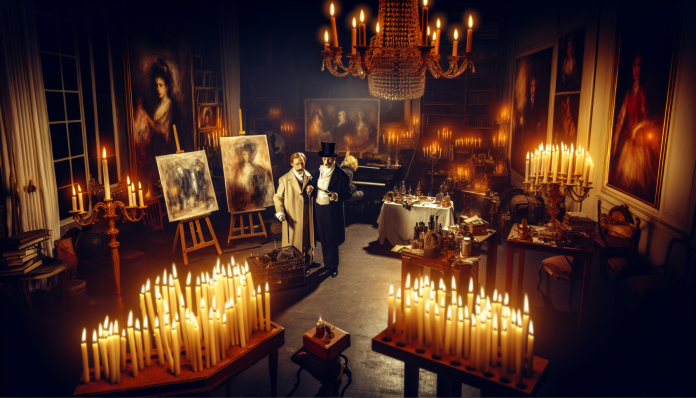Introduction
Pablo Picasso, an iconic figure in the art world, is celebrated for his innovative styles and contributions across various movements. However, his personal life was marred by a series of tumultuous affairs that would captivate the public and transform his female muses into subjects of scandal. How did this master of modern art navigate the complex landscape of love and desire during his life? And how did societal norms shape—and, at times, suffocate—their narratives?
Born in 1881 in Málaga, Spain, Picasso’s artistic journey began at a young age and would eventually span over seven decades. Picasso’s personal life played out against the backdrop of a rapidly changing moral landscape, particularly during the early to mid-20th century, a time when traditional views on love and relationships were being challenged. This article delves into Picasso’s affairs, dissecting the scandal that surrounded his romantic endeavors, elucidating societal reactions of the time, and comparing those reactions to contemporary values around personal freedom and sexual relationships.
The Scandal
Affairs That Shook the Art World
Picasso’s relationships were as varied and complex as his artistic expressions. His affairs often unfolded like dramatic narratives worthy of his canvases. Significant among these was his relationship with Fernande Olivier, his first great love, whom he met in 1904. Their romance not only spurred Picasso’s creative output during the Blue and Rose periods but also marked the beginning of a series of entanglements that would shape both his life and work.
Following Fernande, Picasso would go on to have passionate but tumultuous relationships with many women, most notably:
- Eva Gouel: The love of Picasso’s life during his early years in Montmartre, Eva was also a major influence on his work. Her death from tuberculosis in 1915 deeply affected Picasso.
- Dora Maar: A surrealist photographer, she became Picasso’s muse for several artworks, including works from his famous “Weeping Woman” series. Their relationship was tumultuous, characterized by bouts of passion and depression.
- Françoise Gilot: Known for her assertive personality, Gilot is perhaps the closest Picasso came to a partnership. They had two children together, but she ultimately left him due to his controlling nature.
Perhaps the most scandalous of these relationships was with Olga Khokhlova, a Russian ballet dancer. After marrying her in 1918, Picasso’s affairs led to great public intrigue and ultimately to a tumultuous separation.
Public Reactions and Media Buzz
The public’s reaction to Picasso’s affairs highlighted prevailing attitudes towards sexuality and infidelity. Third parties in Picasso’s relationships were often ostracized, with women facing societal backlash regardless of their role in the artist’s life. Dora Maar, for instance, faced scrutiny from both the public and artistic circles; whispers about her unstable mental state circulated widely, showcasing the stigmas women faced during this era.
Quotes from contemporary sources reveal a stark contrast in public sentiment. Art critic and historian Henri-Pierre Roché remarked, “The genius devours the women he loves.” This perspective illustrates how women were frequently viewed as extensions of Picasso’s artistic endeavors, often stripped of agency in the face of his brilliance.
Moral and Cultural Analysis
Societal Reactions in the Early 20th Century
During Picasso’s heyday, societal norms surrounding sex and relationships were incredibly rigid. In Europe, especially, traditional family structures were upheld with sanctity, and infidelity was largely condemned. Nevertheless, the bohemian culture that Picasso inhabited began to fracture these norms, laying the groundwork for a more liberal view of relationships.
- Consequences for Those Involved:
- For Picasso, his affairs often spurred artistic creations, serving as a double-edged sword of inspiration and personal strife.
- For the women involved, particularly those who were more vulnerable to societal judgments, the ramifications were dire. Many faced public backlash or were relegated to the shadows of Picasso’s fame.
A Modern Perspective
Fast forward to today, and societal perceptions of these scandals exhibit a radically different framework. Contemporary audiences are more inclined to view relationships through the lens of agency, consent, and individual freedom. Infidelity, once a cardinal sin in the eyes of society, is now often contextualized and examined through the complexities of human psychology and relationship dynamics.
- If Picasso’s affairs unfolded in today’s world:
- Social Media: The world of instant communication would have amplified the outrage, leading to viral reactions that could either vilify Picasso or spark discussions about art and its intersections with personal lives.
- Public Figures: The nuanced understanding of personal agency means that figures like Gilot and Maar would likely be celebrated not just as muses but as individuals with their own rights to express their narratives.
Conclusion
The story of Pablo Picasso’s illicit affairs illuminates the shifting sands of societal attitudes towards sex, power dynamics, and personal freedom. His relationships not only shaped his artistic legacy but also serve as a lens through which we can examine changing moral standards in sexual ethics.
As we reflect on Picasso’s life, it’s important to acknowledge how history informs our contemporary values and choices. The narratives that surround such figures continue to challenge our perceptions of love, art, and personal agency. Are we as a society still painting in the confines of societal expectations, or have we embraced a broader canvas of interpretation?
In encouraging critical thinking about these historical events, we remind ourselves of the profound ways art and human relationships intertwine—offering both historical lessons and contemporary relevance in an ever-evolving dialogue surrounding sexuality and personal freedom.

